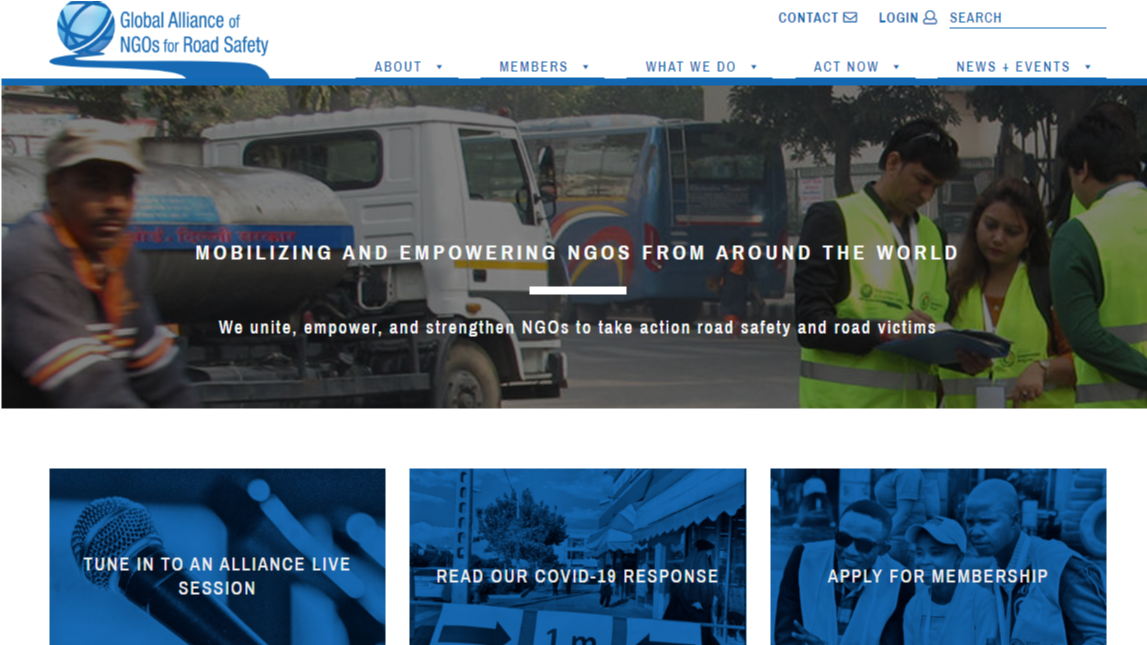
|
ALLIANCE NEWS: NEW WEBSITE
This month, the Alliance has launched its new website HERE.
On it, you can find resources, stories, and information about the
Alliance and its member NGOs. We hope that you enjoy our new format and
navigation. We will be adding new initiatives and posts regularly, so
keep checking in!
|
|
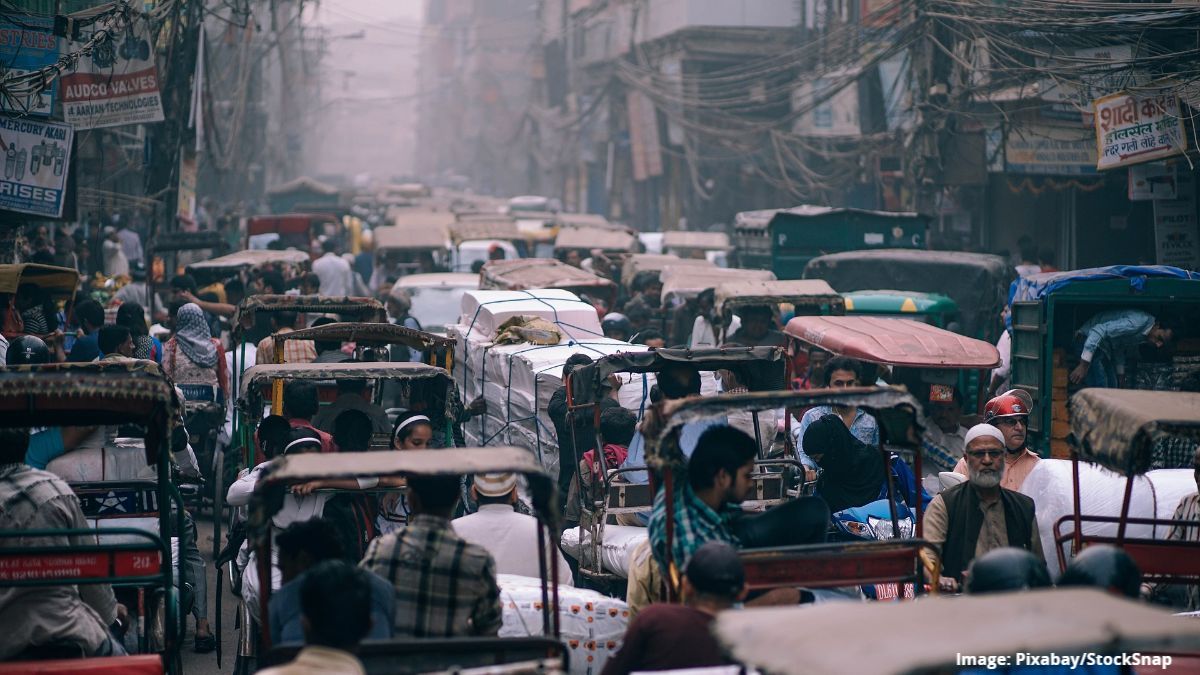
|
ENVIRONMENT, EMISSIONS, ROAD SAFETY AND COVID-19
Use the ‘avoid, shift, improve’ framework, was one of the key messages
from panelists to road safety NGOs at the Alliance Live Session Environment, Emissions, Road Safety, and COVID-19.
Facilitated by Natalie Draisin, FIA Foundation, it featured Maruxa
Cardama, Partnership on Sustainable, Low Carbon Transport
(SLoCaT); Carly Gilbert-Patrick, UN Environment Programme (UNEP); and
Holger Dalkmann, Sustain 2030 and Senior Advisor to the High Volume
Transport (HVT) program and the UK Department for International
Development (DFID).
The framework has a hierarchy, said Maruxa Cardama, with avoid being the
most effective and desirable action. “We must be careful,” she said,
“not just to look at improve.”
- AVOID long, unnecessary motorized journeys. “If you
reduce the length of trips ... it reduces exposure to air pollution as
well as the risk of a crash,” said Holger Dalkmann.
- SHIFT to more active, zero-carbon modes of transport such as walking and cycling
- IMPROVE adaptations such as electric transport modes.
Panelists offered a number of solutions for NGOs seeking to link the
road safety and environment agendas, and in particular, pointed to their
ability to influence communities for behavior change and broker
conversations across stakeholders, including different levels and
departments of government. Read more and listen to the full recording HERE.
|
|
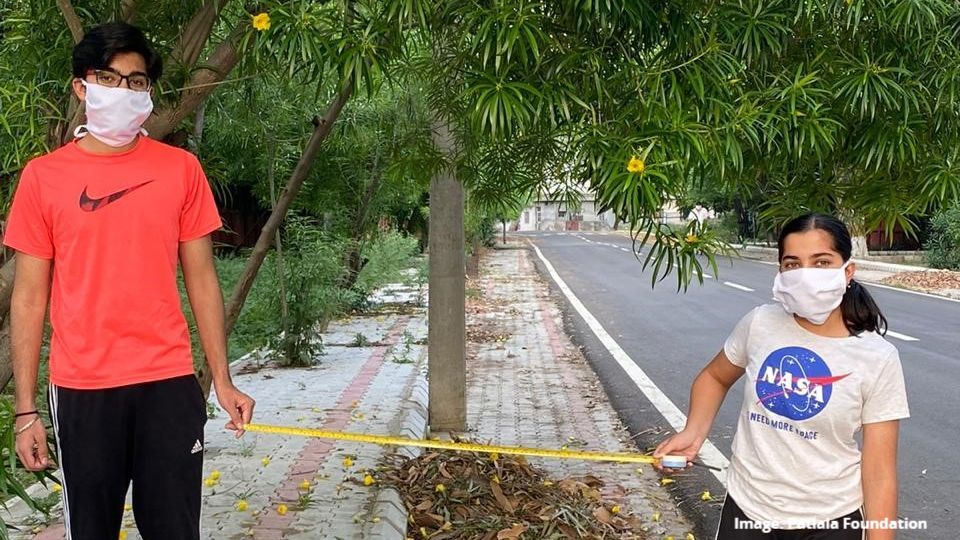
|
IN ACTION: A SAFE, SUSTAINABLE CITY FOR CITIZENS
“Rather than saying ‘How can we make links [between different
SDGs/issues]?’ ask ‘who are we trying to help and what do they need to
get that help?’ Then we can all do our bit,” said Carly Gilbert-Patrick
at the Live Session on environment and emissions.
Alliance member, Patiala Foundation, India, runs projects to make
Patiala a safe, sustainable, liveable city for citizens. Road safety is
one of the ways that they achieve this, with particular focus on the
right to walk. Following up on comments from school children, the NGO
noticed that sidewalks were being removed around the city in an attempt
to reduce traffic congestion. Patiala Foundation used police and census
data to prove to the local authorities that only 6% of citizens were
using cars to go to work, with almost half (46%) walking or cycling.
This led to a change of approach and the city, with help from Patiala
Foundation and other stakeholders, is restoring the number of
sidewalks.
Read more HERE
about Patiala Foundation’s right to walk project, as well as its
GreenCAB scheme, which provides eco-friendly cycle rickshaws with
seatbelts for drivers to start their own sustainable, regulated
cycle-taxi businesses.
|
|
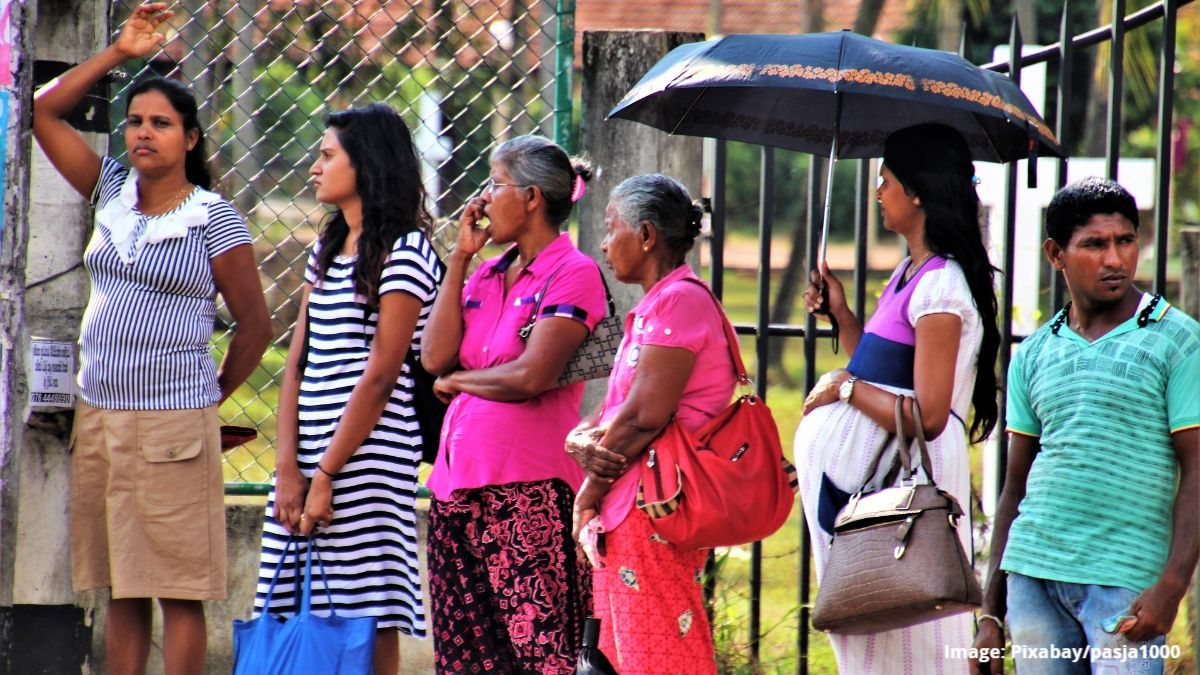
|
GENDER AND MOBILITY
“The street or a road or a public transport vehicle is not just a way to
get from A to B,” said Naomi Mwaura, Flone Initiative, at the Live
Session on gender and mobility. “It is a stage where human interactions
occur and interactions can be positive or negative. For most women and
girls, these interactions are negative.”
The panel, which also included Marie-Axelle Granié, Université Gustave
Eiffel, and Wouter Stes, Plan International Belgium, facilitated by Eric
Remacle, pointed to evidence that women experience significant
disadvantages in mobility.
- 91% of girls surveyed as part of Plan International’s
Safer Cities program in Belgium had experienced sexual harassment in
public places, versus 28% of boys.
- Only 6% of victims file complaints, the same report found.
There is a need, Wouter Stes argued, to lower the barriers to reporting
harassment and increase perpetrators’ understanding.
- Only 7% of public transport workers in Kenya are women according to Flone Initiative figures.
- Women are less likely to have a private vehicle, said
Marie-Axelle Granié. Consequently, they walk more, carrying heavier
loads, and are more dependent on public transport. They are less likely
to use bicycles.
- Men are three times more likely to die in a road crash and many are the sole-breadwinner in their families.
- Women have a higher risk of lower-body injury, as their smaller bodies are not considered in vehicle design.
Read more and listen to the session HERE.
|
|
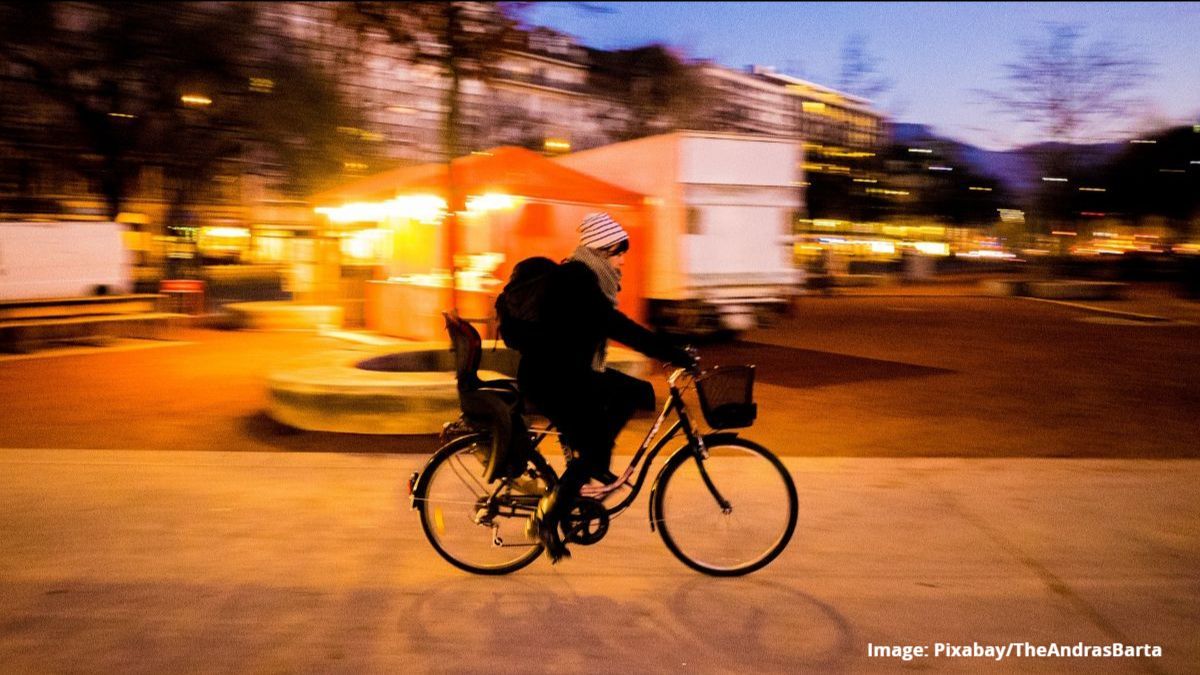
|
IN ACTION: SAFER CYCLING FOR WOMEN IN ARGENTINA
In Neuquén, Argentina, the municipality has introduced a new mobility
action plan to address rapid growth in the city’s population and
increasing congestion. It has introduced a new bicycle-sharing scheme
and 30 kilometers of new bike paths and lanes. However, only 30% of
those using the new infrastructure are women.
Alliance member A.C.T.I.V.V.A.S. has been working with the authorities
in Neuquén to make cycle infrastructure in the city safer and more
accessible for women. In a roundtable organized by the NGO last year,
the city committed to increasing the number of women on bicycles there
to 50% and to implement a further 70 kilometers of cycle routes.
A.C.T.I.V.V.A.S. has signed a cooperation agreement with the Road
Observatory of the Universidad de Flores to monitor the commitment. Read
more HERE.
|
|
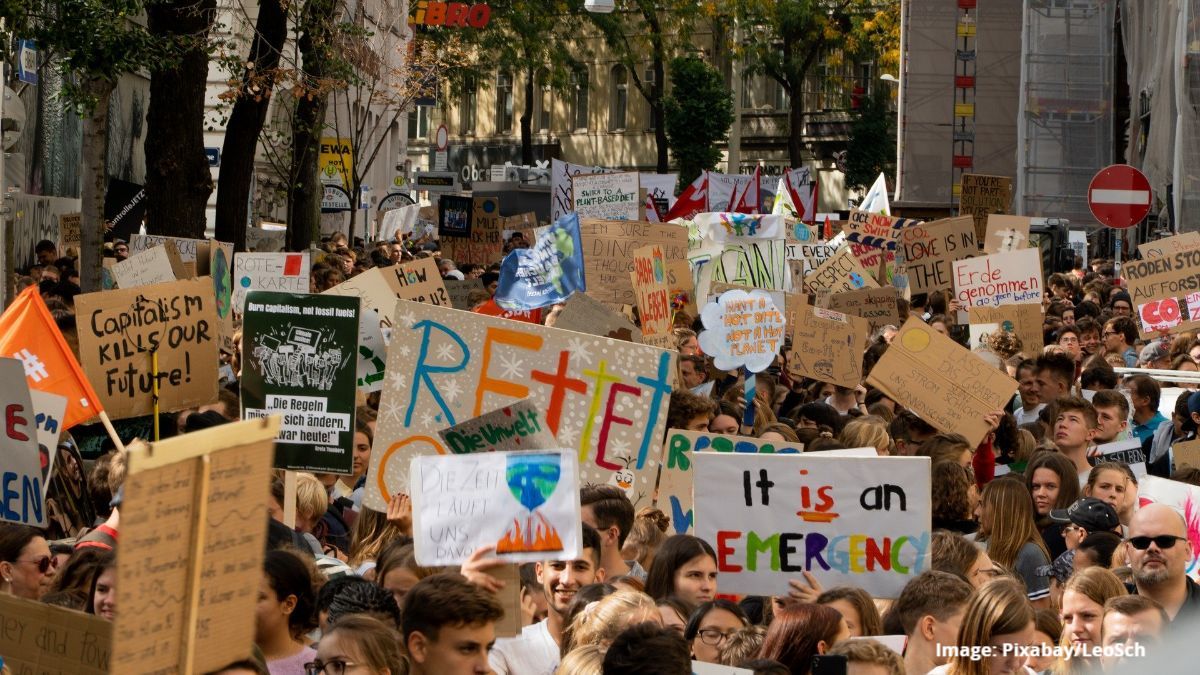
|
YOUTH ENGAGEMENT
“Most decisions being made now affect young people’s futures more than
the futures of those making the decisions," said Amelia Buchweitz
Garcez, climate change activist with Fridays for Futures at the final
Alliance Live Session on Youth, Leadership, and Issues that Matter: Engaging the Young Generation.
Alongside her, were three other young leaders from different advocacy
sectors, including, Ritu Jain, of gender-equality NGO Restless
Development, Danish Mohammed, of the International Labor Organization
(ILO), and Jacob Smith, of Alliance member YOURS. Drawing on their
experiences in different fields, they discussed how to get youth
motivated for road safety, ways that NGOs can engage young people in a
more meaningful way, and the benefits of youth participation.
“Channelizing youth,” explained Ritu Jain, “can create wonders.”
The spirit of the Live Sessions was summed up by Danish Mohammed. “In
the struggle for social justice, somewhere along the line, all of our
different movements and issues merge into this one just world and the
sooner we see the common goal, the sooner we start working together and
the sooner we get there.”
Read more and listen to the recording HERE.
|
|
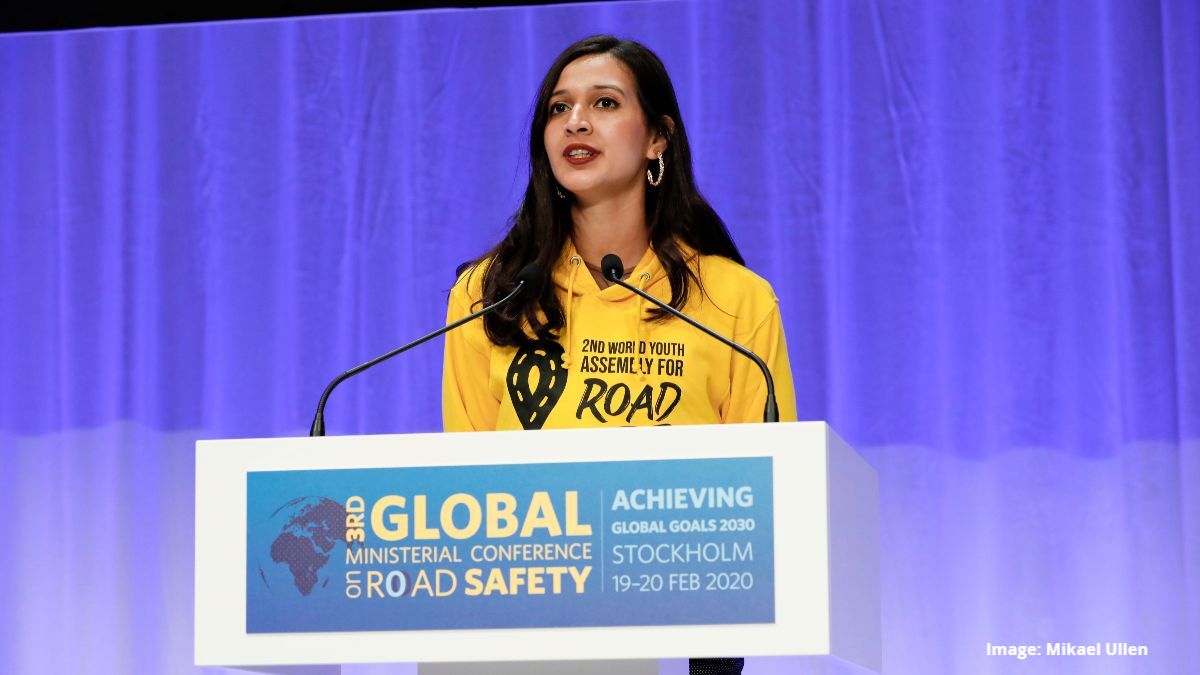
|
IN ACTION: #CLAIMINGOURSPACE
At the opening ceremony of the 3rd Global Ministerial Conference in
Sweden in February, Omnia El Omrani delivered a message to government
ministers and decision makers around the world on behalf of the members
of the World Youth Assembly (WYA) taskforce and the thousands of young
people from around the world who took part in youth consultations in the
run up to the conference.
Read about how Omnia El Omrani and members of the taskforce pushed youth
engagement at the ministerial conference, how they have maximized
momentum since then, and the upcoming launch of the Youth Coalition,
which is the primary outcome of the WYA, HERE.
|
|

|
ALLIANCE NEWS: ANNUAL REPORT
Check out our Annual Report, launched this month, and relive
the highlights of 2019. The report features the Global Meeting,
#SpeakUp, #CommitToAct, the Safer Cycling Advocate Program, LEARN, and
more, and includes lots of member photos and stories. Find it HERE. |
|
|
|
Δεν υπάρχουν σχόλια:
Δημοσίευση σχολίου